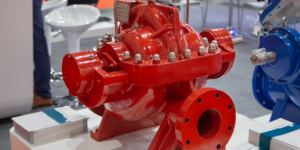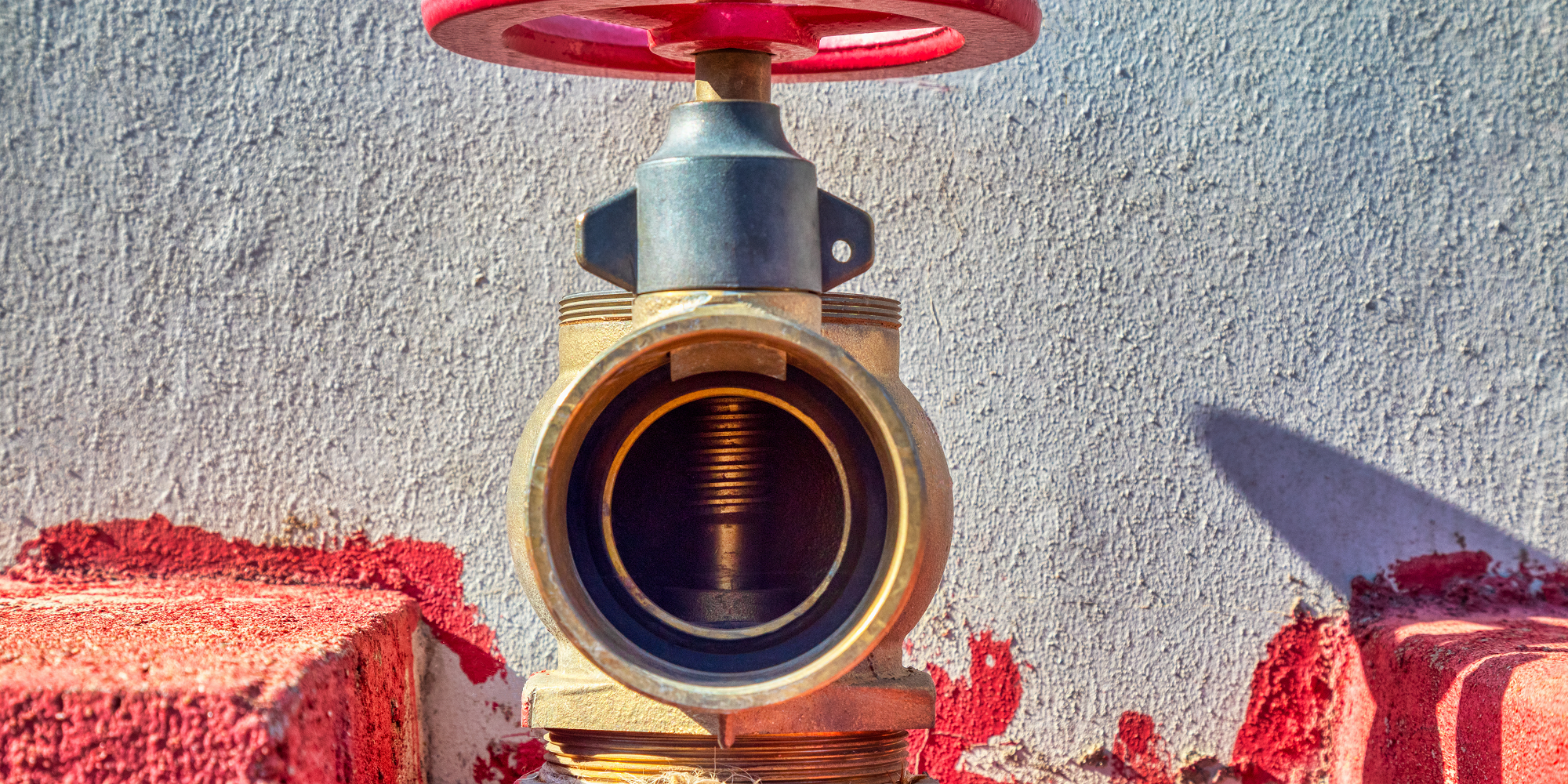Imagine a building fire with alarm bells sounding. People fled to safety, praying for aid quickly. An appropriately sized fire pump can make the difference between limiting the fire or letting it spread.
How do you choose a fire pump size? Performance curves—how do they affect this equation? No worries—we’ll help! We’ll explain the fire pump sizing and performance curves.
How to size a fire pump
A fire pump’s size depends on various things. First, calculate the fire-suppressing water flow rate. This depends on the building’s size, type, and risks.
Next, examine water availability. A firewater tank or municipal water connection should supply water to the fire pump. The supply must be sufficient to meet the specified flow rate for a long time.
Also, consider system elevation changes. Friction losses can reduce fire pump performance when pushing water uphill or long distances.
Pressure requirements are also important. Fire pumps must supply enough pressure to hoses, sprinklers, standpipes, and hydrants. Not meeting these pressure criteria could hinder firefighting.
Consider building occupancy changes and expansion plans. Predicting growth or changes that may necessitate pump capacity adjustments is crucial.
You may appropriately size a fire pump that fits current and future needs by carefully evaluating these criteria and contacting specialists. Remember: firefighting requires preparation!

The basics of performance curves
Understanding performance curves is essential for fire pump sizing. Performance curves reveal pump performance at varied flow rates and pressures.
A performance curve usually has two axes: flow rate (gallons per minute or liter per second) and pressure (pounds per square inch or bar). The curve depicts how these two variables connect to a pump model.
The performance curve shows the pump’s efficiency, maximum flow rate, and pressure stability. This information is crucial for choosing a fire pump.
The right fire pump size depends on the building size, occupancy type, firefighting water supply, and local restrictions. You can ensure your fire pump fulfills emergency operational needs by considering these elements and hydraulic calculations of system demand.
Using a performance curve efficiently requires aligning system demand with market pumps. You may determine which pumps fulfill your needs by putting system demand on the graph and determining where it meets with manufacturer curves.
Not all pumps are the same. Based on impeller design and motor horsepower, manufacturers may present slightly different performance curves. Therefore, it’s crucial to consult hydraulic calculation professionals who can effectively read manufacturer data sheets.
What factors to consider when sizing a fire pump
Fire pump size depends on numerous things. The sort of facility or region to protect comes first. Firefighting water demand depends on room size and arrangement.
Building hazard classification is also significant. Effective firefighting requires diverse flow rates and pressures for different dangers. High-rise buildings and industrial warehouses have various needs.
A fire pump’s size also depends on water availability. The fire prevention system requires enough volume and pressure from the water supply, such as a public mains system or onsite storage tank.
Future expansion plans and occupancy changes that affect water usage must also be considered. Size should account for future growth and changes.
Always follow local codes when sizing a fire pump. Minimum flow rates, pressure levels, and equipment specifications vary by jurisdiction.
How to use a performance curve to select a fire pump
A performance curve is vital for choosing the proper fire pump. These curves show how a pump performs under different settings, helping you choose.
First, a performance curve shows flow rate versus head pressure graphically. Head pressure measures the force needed to move water via pipes and hoses, whereas flow rate is the volume of water the pump can provide. Some places on the curve indicate how these two factors interact.
Use a performance curve to successfully meet your system’s needs. Take into account flow rates, water supply, pipe length and diameter, elevation variations, and friction losses.
Choose your preferred flow rate on the performance curve’s horizontal axis. Vertically follow it until you reach the right head pressure line. This point reveals your ideal pump model.
Pumps work optimally around their curve’s best efficiency point (BEP). Choosing a pump too far from this point may waste energy or prematurely wear out.
Using a performance curve is essential to choose the right fire pump size. You may definitely choose a pump that meets your firefighting needs by examining graph points depending on flow rate and head pressure.

Conclusion
Safe and effective firefighting systems require fire pump sizing and performance curve analysis. You can precisely establish the fire pump size for your application by considering flow rate, pressure requirements, water supply, and system design.
Remember that every case is different, thus fire protection engineering professionals and manufacturers can offer essential insights and help during sizing. Learning about performance curves can also help you choose the best fire pump for its operational characteristics.
Following these instructions and evaluating all important elements will allow you to properly specify a fire pump that fulfills regulatory criteria and your needs. This will help keep firefighting systems efficient and safe in any building.
Enter the world of fire pumps and performance curves! You can handle any fire pump sizing difficulty with knowledge and careful consideration of all variables. Stay safe!
